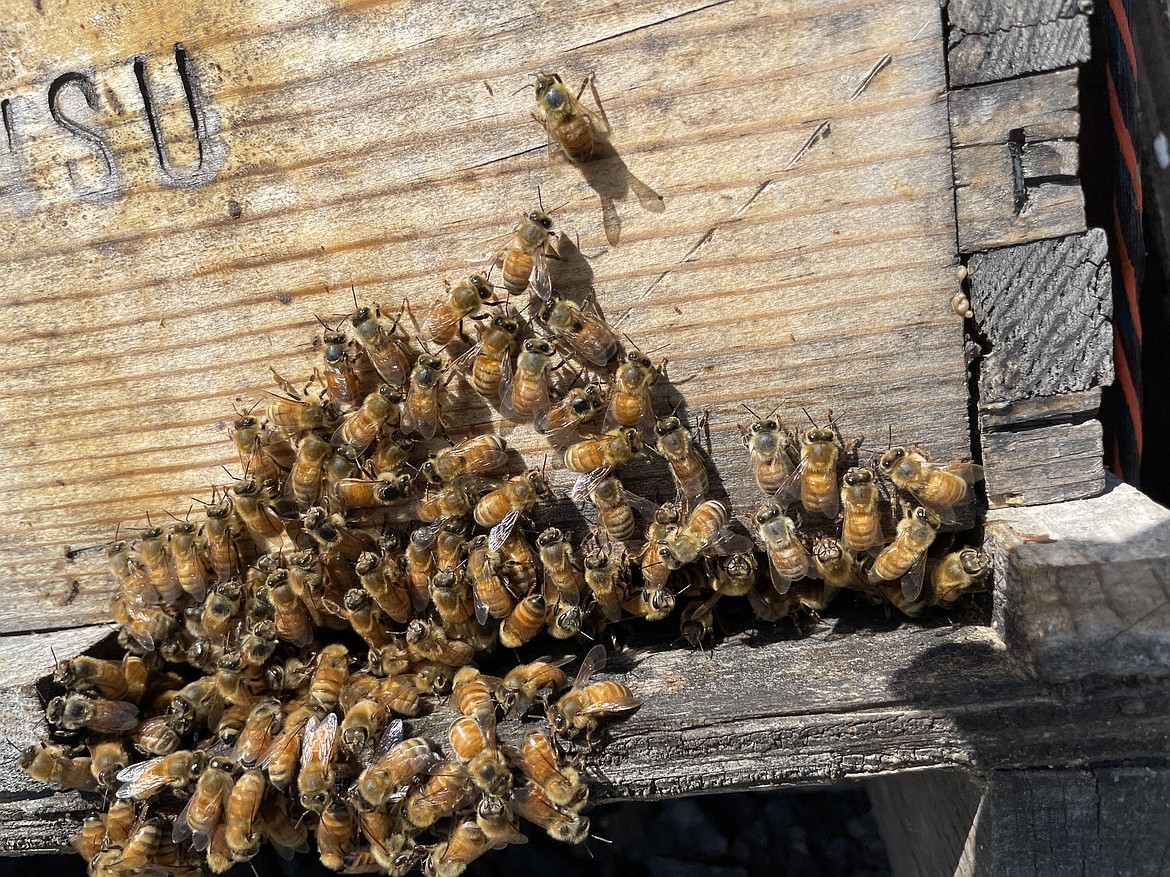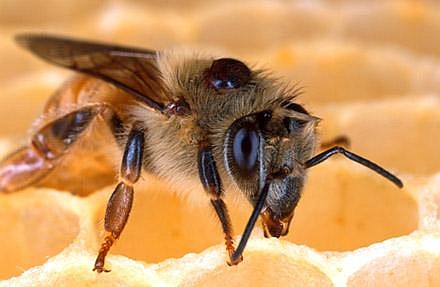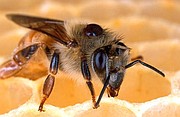Bee colonies down from last year in US
JOEL MARTIN | Hagadone News Network | UPDATED 2 years, 2 months AGO
Joel Martin has been with the Columbia Basin Herald for more than 25 years in a variety of roles and is the most-tenured employee in the building. Martin is a married father of eight and enjoys spending time with his children and his wife, Christina. He is passionate about the paper’s mission of informing the people of the Columbia Basin because he knows it is important to record the history of the communities the publication serves. | October 1, 2023 1:00 AM
MOSES LAKE — Honey bee populations are down nationwide, but that’s not necessarily a reason to worry, agriculture statisticians say.
“Honey bees and other pollinators are critically important to securing the nation’s food supply and providing ecosystem services that insure plant diversity, soil stability, and species richness,” the U.S. Department of Agriculture wrote on its website.
According to statistics released in August by the National Agricultural Statistics Service, In January 2023 there were 2.68 million domesticated honey bee colonies for operations with five or more colonies in the U.S., down 7% from the 2.88 million colonies in January 2022. In April, the year-over-year change was even greater, from 2.71 million to 2.91 million colonies, a 9% change.
In Washington, the decrease was a little larger than the national decline, dropping 9% from 70,000 to 65,000 colonies from January 2022 to January 2023, and 9% again from 97,000 to 87,000 from April to April.
“The reality is that you’re going to have a seasonality to the number of colonies, because you’re gonna have more colonies in the summer than you’re gonna have in the winter,” said Seth Riggins, an economist with the U.S. Department of Agriculture. “Each colony is going to produce several queens, which can then be broken up to start more colonies in the spring. Producers can split colonies, they can buy more colonies, they can buy more queens, so they can offset that loss if they need to for the operation.”
This is not to say there are no threats to the honey bee population. The biggest stressor for honey bees, according to the NASS, is the varroa mite. This bloodsucking parasite arrived in the U.S. in 1987 from Asia, according to the USDA’s Agricultural Research Service. There its primary prey was the Asian honey bee, or Apis serana, which didn’t suffer a great deal from its predations because it only infested drone brood, less than 5% of a colony’s brood population. Additionally, adult Asian honey bees are able to remove and kill varroa mites on each other. The honey bees in the U.S. are Apis Mellifera, or European honey bees, and Varroa mites infect both their drones and workers, brood and adults.
“(European honey bees) came over with the colonists hundreds of years ago,” Riggins said. “They’ve spread rapidly over the entire North American continent because it was conducive to their lifestyle. So we had wild honey bees and bees in production. There’s virtually no wild population now, because of the varroa mite.”
Varroa mites appear to be on the increase, according to the NASS report. From April through June 2022, the percentage of colonies in the U.S. affected by the mites was 47.5, increasing for the same period in 2023 to 50.9. Washington colonies affected by Varroa mites decreased in the same period, from 50.8% in 2022 to 41.6% in 2023.
“Climate change is a significant factor contributing to the decline in pollinator populations,” the USDA wrote on its website. The warming of the planet and changes in weather patterns are altering the synchrony between flowering plants and their pollinators, causing nutritional stress … (T)he warmer fall and winter temperatures are extending the period when bees are foraging. This disrupts the colony age structure and resource utilization, enabling Varroa mites to migrate among colonies on foragers, spreading this parasite and the viruses it transmits throughout apiaries.”
In the long run, Riggins said, the changes really aren’t all that drastic and they tend to correct themselves.
“We were down 1% on Jan. 1 last year. The year before we were up 2%. The year before that we were up 8% and we were up 1% the year before that. So it’s something that fluctuates year in and year out. We seem to be fairly stable at the U.S. level.”
Joel Martin may be reached via email at [email protected].
ARTICLES BY JOEL MARTIN

Wahluke Jr. High earns Culture Kick-Off Award again
MATTAWA — Wahluke Junior High School has been honored with the 2025 Culture Kickoff Award for the second year in a row, according to an announcement from the Association of Washington School Leaders and the Association of Washington School Principals.

Moses Lake firefighters meet the community with hot cocoa
MOSES LAKE — Moses Lake firefighters held their Christmas community event at ground level this year. “The last few years, we’ve done what we call the campus tour,” said MLFD Battalion Chief Schrade Rouse. “We would put our Santa on top of the truck and ride a neighborhood route so that people could come out and visit with us if they wanted to. But recently we were restricted by (state law) about letting Santa Claus ride on top to the truck. So now we’re trying a stationary (event).”

Women combine talents to open businesses in shared space
MOSES LAKE — Three woman-owned businesses held a ribbon-cutting and grand opening at their new location in Moses Lake Thursday. The office at 815 W. Third Ave. holds an accounting firm, a massage service and a waxing room. “We’re a one-stop shop,” Mandy Schuh said. Schuh is the owner and founder of both Pillar Rock Accounting and Seventh Sense Serenity massage service. As Pillar Rock, she and her assistant Esmeralda Sanchez handle after-the-fact bookkeeping: general bookkeeping, payroll processing and bank and credit card reconciliation. That’s the business people see when they walk in the front door. In a quiet, gently-lit room in the back of the office, Schuh massage services, including Swedish, intraoral massage, myofascial, reflexology and the Japanese technique called Reiki.



